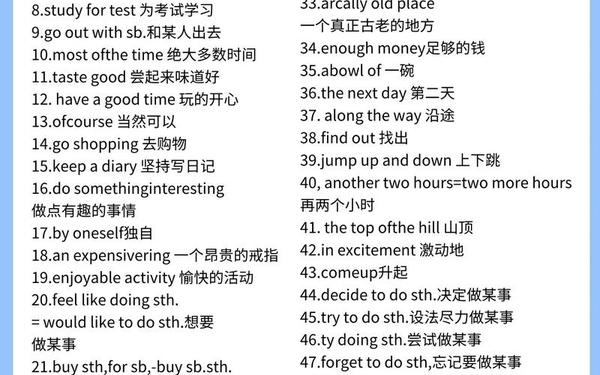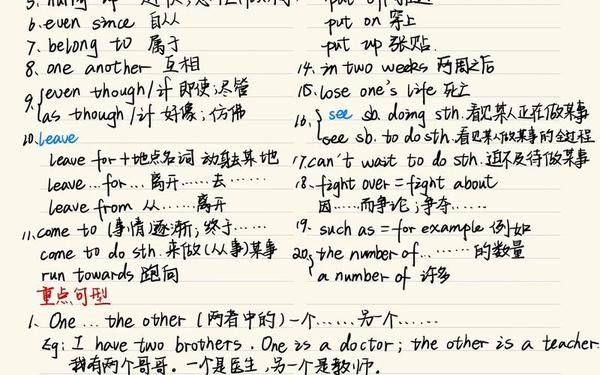一、动词时态与语态

1. 常见时态
一般现在时:表示习惯性动作或客观事实(结构:主语 + 动词原形/三单形式)。
例:He usually goes to school by bike.
现在进行时:表示正在进行的动作(结构:am/is/are + 现在分词)。
例:They are playing basketball now.
一般过去时:过去发生的动作(动词用过去式)。
例:She watched a movie yesterday.
现在完成时:强调过去动作对现在的影响(结构:have/has + 过去分词)。
例:I have already finished my homework.
2. 被动语态
结构:be动词 + 过去分词,时态通过be动词变化体现。
例:The book was written by him.
二、名词与代词
1. 可数名词与不可数名词
可数名词复数规则:加-s/-es,如books、boxes;不规则变化如man→men、child→children。
不可数名词(如water、milk)不可直接加冠词或数词,需用量词表达,如a cup of tea。
2. 代词分类
人称代词(主格I/you/he,宾格me/you/him);
物主代词(my、your、his);
反身代词(myself、yourself)。
三、形容词与副词
1. 比较级与最高级
规则变化:
单音节词加-er/-est(tall→taller→tallest);
以e结尾加-r/-st(large→larger→largest);
辅音+y结尾改y为i加-er/-est(happy→happier→happiest)。
不规则变化:good→better→best;bad→worse→worst。
2. 频度副词
用法顺序:行前be后(例:He is always late)。
频率排序:always(100%)> usually(70%)> often(50%)> sometimes(20%)> hardly ever(5%)> never(0%)。
四、连词与从句
1. 并列连词

and(并列)、but(转折)、or(选择)、so(因果)。
例:Study hard, or you will fail the exam.
2. 从句引导词
状语从句:when(时间)、because(原因)、if(条件)。
例:If it rains, we will stay at home.
定语从句:who(人)、which(物)、that(通用)。
例:The book that I borrowed is interesting.
五、易混淆词与短语
1. hard与hardly
hard作形容词表示“困难的”,副词表示“努力地”;
hardly表“几乎不”。
例:He works hard, but he hardly rests.
2. some time/sometime/sometimes
some time(一段时间);sometime(某个时间点);sometimes(有时)。
例:I will stay here for some time.
3. too/also/either
too/also用于肯定句;either用于否定句。
例:She likes apples too. / He doesn’t like it either.
六、句型与句子成分
1. 句子成分
主语(动作发出者)、谓语(动词)、宾语(动作承受者)、表语(说明主语状态)。
例:The cake tastes delicious(表语)。
2. 疑问句转换
一般疑问句:将be动词/助动词提前(Is he a teacher?);
特殊疑问句:疑问词+一般疑问句(Where do you live?)。
七、高频语法拓展
1. 情态动词
can(能力)、should(建议)、must(必须)。
例:You should drink more water.
2. 非谓语动词
动名词(doing)作主语或宾语;不定式(to do)表目的。
例:Reading is fun. / I want to go home.
学习建议
1. 强化练习:针对易错点如时态、比较级、从句等进行专项训练。
2. 积累错题:整理错题本,分析错误原因(如混淆频度副词位置)。
3. 阅读与听力:通过阅读文章和听力材料巩固语法应用(如网页11提到的阅读技巧)。
以上知识点需结合教材例题和练习题巩固。更多详细例句及练习可参考来源网页。



